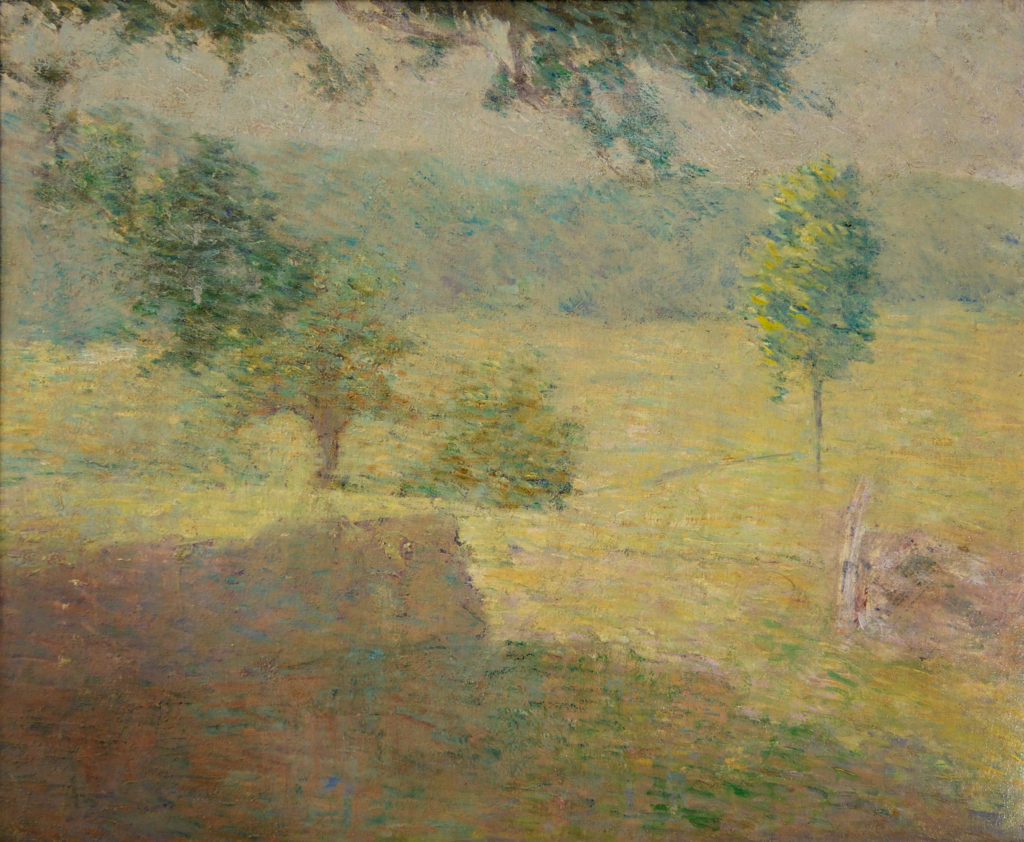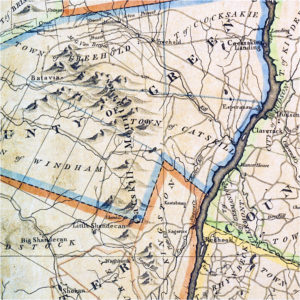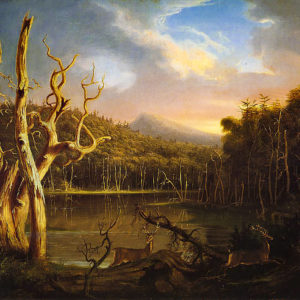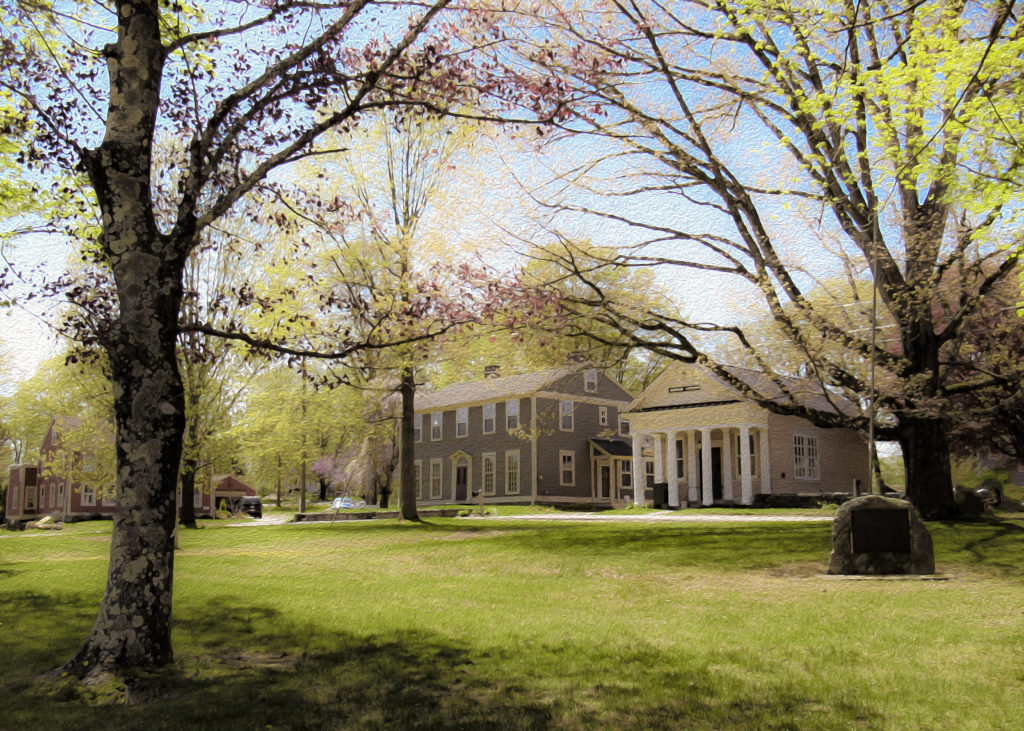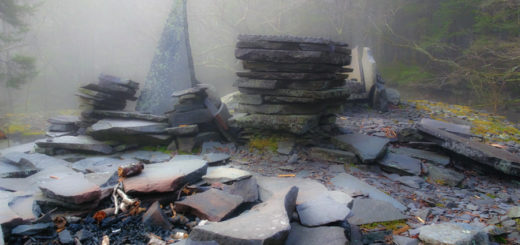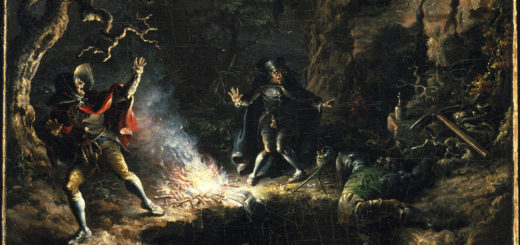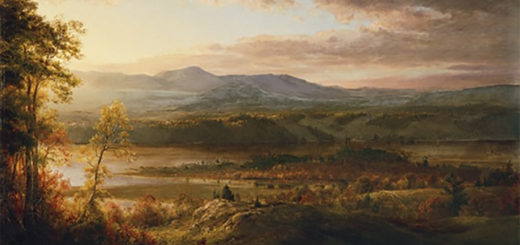Shadows of Windham
Windham in the Catskill Mountains of New York is said to be named after the town of Windham located in the “Quiet Corner” of northeastern Connecticut, which in turn is named after the market town of Wymondham in Norfolk, England, which itself is a name derived—according to Samuel Lewis’s A Topographical Dictionary of England (1848)—“from the Saxon Win Munde Ham, signifying ‘a pleasant village on a mount’” dating back to the year 1130. Thus when you trace the name of a town in the Land of Rip Van Winkle through the long reaches of space and time, you wind up right where you started: in “a pleasant village on a mount.”
Settlement of the area in the northern Catskill Mountains now known as the Mountaintop did not commence until after the American Revolution. That’s when a steady influx of migrants from New England set to work clearing the primeval forest for subsistence farms. Writing with metaphorical enthusiasm in the pages of the Windham Journal in 1869, the Reverend Henry Hedges Prout describes those early days: “Those who raise bees know with what sagacious boldness the new swarm rushes into the woods, and finds a home in the wilderness, and gathers sweets in the deep solitudes. Such seems to have been the emigrating instinct which must have seized and impelled the inhabitants of Connecticut into the newer parts of the country. The majority of the early settlers were a swarm from that hive.”
When the town of Windham, New York was created in 1798, it consisted of the entire upper half of the Schoharie watershed and a tributary basin of the Pepacton Branch of the Delaware River. In his 1813 Gazetteer of the State of New York, Henry Gates Spafford makes note of a singularly spectacular vista in Windham, “which attracts the notice of numerous parties in summer.” As he puts it: “The view from this mountain is inexpressibly grand, and well merits the attention of those who delight to contemplate the stupendous scenery of nature.” Ten years later, James Fenimore Cooper would publish his novel The Pioneers, bestowing literary immortality on this very site via the words of his character Natty Bumppo: “There’s a place in them hills that I used to climb to when I wanted to see the carryings on of the world, that would well pay any man for a barked shin or a torn moccasin. You know the Catskills, lad, for you must have seen them on your left, as you followed the river up from York, looking as blue as a piece of clear sky, and holding the clouds on their tops, as the smoke curls over the head of an Indian chief at a council fire.” When asked by his companion what can be seen from there, Natty sweeps his hand around in a circle and exclaims: “Creation! All creation, lad.” This awe-inspiring locale was the broad cliff along the Catskill escarpment known as the “Pine Orchard,” close by a pair of lakes called North and South as well as the magnificent Kaaterskill Falls.
In the same year—1823—that Cooper published his novel, entrepreneurs from the village of Catskill were erecting a hotel at the Pine Orchard. They called it the Catskill Mountain House. Two years later, the young artist Thomas Cole made his first visit to this area and was enthralled by the scene. Not long after that he painted the landscapes that launched the artistic movement that later became known as the Hudson River School. And so the pleasant town of Windham might have become known as the birthplace of the American tradition in landscape painting—were it not for the fact that in the same year Spafford published his Gazetteer, 1813, the town of Hunter, then called Edwardsville, was carved out of Windham and included the Pine Orchard, the lakes, and Kaaterskill Falls. Also in 1813, the town of Lexington was formed from Windham. In later years the towns of Prattsville, Ashland, and Jewett were created in similar fashion, leaving the pleasant town of Windham but a territorial shadow of its former self.
Windham’s namesake in Connecticut is an equally pleasant town with a somewhat deeper and more varied history—both rural and industrial—extending back to 1693. According to one of its historians, Windham soon became “exceedingly prosperous and prominent . . . [having] four well-trained military companies, four meeting-houses, a courthouse, prison, and jail, numberless stores and taverns, and many private residences.” By the end of the eighteenth century, the village was famous for its “exuberant hilarity” and occasional outbreaks of rowdyism, owing to the fact it was a stop along the stage route from Providence to Hartford. In the latter decades of the nineteenth century, farm abandonment and gradual reforestation were turning Windham into an attractive summer destination for artists and well-to-do urban residents seeking a little fresh air in the country.
The artist J. Alden Weir (1852-1919) was one of those city migrants charmed by the village of Windham with its bucolic hills, bee-loud pastures, and venerable trees—not to mention a certain young woman from there named Anna Baker, whom he had met in 1882 and fallen in love with. They married the following year. Over the next four decades, Weir spent a good bit of each summer painting in his wife’s hometown. The couple eventually inherited her parents’ house and Weir built a studio for himself nearby. In an early letter to Anna, he writes: “No hour in the day passes but what I recall the first Connecticut hours we had in the charming little village of Windham. This is really the first Connecticut village that I have really ever known & now I feel that a chain is connected to all villages.” One gets the sense from reading these words that Weir is not only expressing the connection he feels to his beloved and her hometown, but to the prevailing spirit of the place—what the ancient Romans called its genius loci. Every place has such a spirit, though it often goes unnoticed, lurking in the shadows, until a creative temperament comes along and engages with it.
J. Alden Weir evoked the spirit of Windham, Connecticut not only in his love letters to Anna but also in the many paintings he made in and around the village—especially one he did near the turn of the twentieth century titled The Shadow of My Studio, Windham. In this plein air work of a summer afternoon, Weir captures the pale duskiness cast by the artist’s workplace, inching its way across a verdant pasture toward an obscure line of trees in the middle ground and an even more obscure forest in the distance—shade moving toward shade connecting with still greater shade, until the field of vision itself is subsumed. It’s a remarkable painting for many reasons, not least of which is how much this scene could just as well have been painted in Windham, New York, so encompassing is that chain that connects all villages. Spend enough time gazing into this marvelous image, you might even hear the distant, pleasant buzzing of bees.
©John P. O’Grady
Originally appeared in The Mountain Eagle on May 24, 2019
